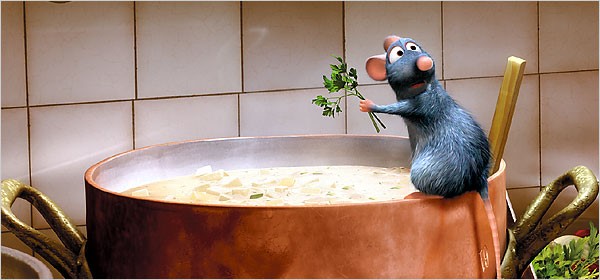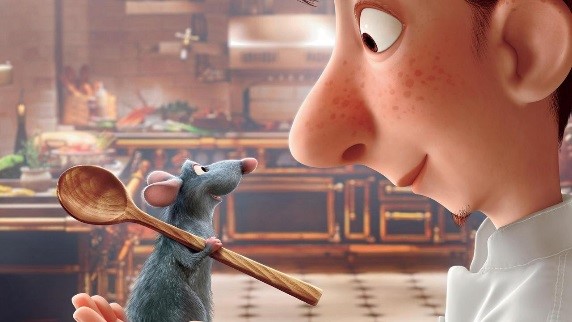Brad Bird’s Ratatotuille challenges how we stereotypically perceive rats through the depiction of the protagonist, Remy. The narrative shows Remy struggling with finding acceptance in human society, despite the exceptional cooking talents he has to offer. In anthropomophising Remy to directly challenge our negative perception of rats, Ratatouille promotes wider messages of hope and perseverance for the underdog, as well as acceptance and tolerance of those we perceive as different to us.

Remy is intelligent and possesses a sensitive emotional capacity that allows for him to communicate with human Linguini. He cannot understand Remy, but Remy understands him, and thus acts as a kind of puppet, transferring his culinary expertise over to Linguini. Despite their positive relationship, Remy is kept hidden from the rest of society, who view him with sheer contempt. Humans typically see rats as vermin, but in Ratatouille our sympathies are aligned with Remy and his plight. Partly because his anthropomorphising lends him typically ‘cute’ features, and partly because we are presented with the viewpoint of human society being cold and unforgiving; particularly, the culinary world is elitist. In this sense, the exploration of human-animal relationships in Ratatouille could be seen as a platform to represent wider ideas of social class structure in society. If Remy represents the proletariat, food critic Anton Ego perhaps represents the bourgeoisie. In aligning our sympathies with Remy, Ratatouille cleverly advocates a sense of hope for the underdog.

The scene in which Remy’s father takes him to the rat catcher shop is visually powerful and reinforces our sympathies with Remy being at the bottom of society. Pathetic fallacy is incorporated as they climb out of the gutter together; the heavy rain represents the bleak oppressiveness of what Remy witnesses. Rat corpses are slung up on display in the window, next to gruesomely big containers of rat poison and pest control. Somber music characterises the scene, as does a low-key lighting that is contrasted with the occasional flash of harsh, unforgiving light illuminating the dead bodies. The shop is seen from a low camera angle – as Remy would be seeing it – contextualising how enormous this shop of horror looks from the perspective of Remy’s little frame. In this scene, humans are presented as the evil predators of rats, furthering our deep empathy for Remy. The grim realisation of his place at the bottom of society is summed up by his father: ‘This is the way it is. You can’t change nature’. Yet, Remy rejects this, and vows to try and change how the world sees rats. Through the depiction of Remy’s plight, Ratatouille attempts to promote wider ideals of kindness and acceptance in society, and not to judge based on people’s appearance or background. Remy is designed to be a cute, loveable version of animals we typically associate with horror and disease, so our perspective is completely turned on its head. In that sense, Remy represents a story of hope and perseverance in achieving his dreams in an egalitarian society.